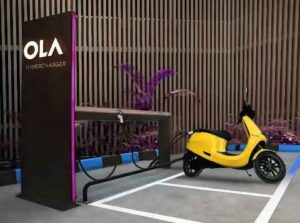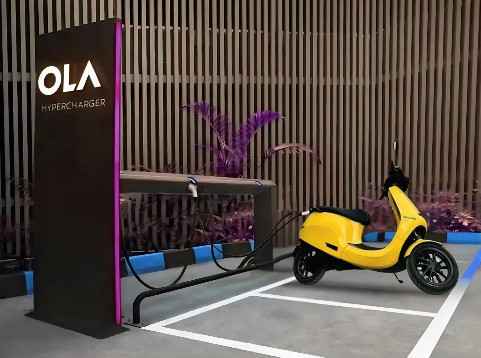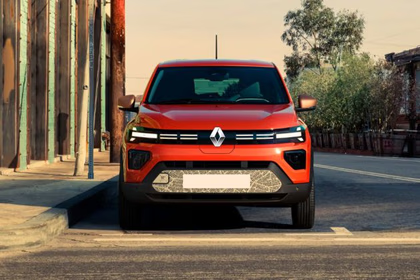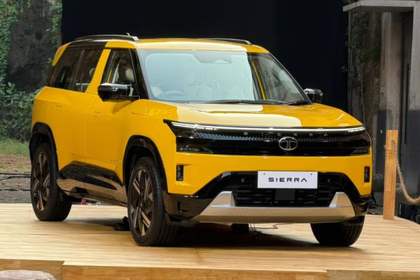The marketplace of electric vehicles (EVs) grew at a great pace, with Ola Electric EVs as one of its frontrunners. However, the recent tweet from Aslam Puthanathani raised red flags on whether the charging system comes with value for the money.
- The Discussed Expenses of Operating an Ola Scooter
- What is the reason behind the outrage that this tweet caused?
- The Big Picture: EV Adoption In India
- The Future Looks Bright for Ola Electric and EV Owners
- Conclusion
- FAQs
- How much does it cost to charge an Ola scooter on the Ola hypercharge service?
- How many kilometers can the Ola Hypercharge network charge in a scooter?
- Is the cost of operating an electric scooter more or less than that of a petrol scooter?
- How do different Ola Electric systems charge their customers?
- Can the Ola Hypercharge system ease the worries of EV users with short ranges?
Giving his thoughts on the same, Puthanathani stated, “The Ola HyperCharge System, for 50 kilometers, costs an astonishing Rs. 339 for an Ola electric scooter. This is unforgivingly expensive in comparison to petrol scooters.”
This statement puts into question whether an electric vehicle in India is truly economical and easy to maintain. Even though this outback seems controversial, there are many variables that must be thought of prior to assuming. Let’s analyze the case – what is being said against the Hypercharge system criticism stemmed from misinterpretations of how it operates? Is it accurate or not?
The Discussed Expenses of Operating an Ola Scooter
Aslam Puthanathani, in his tweet, seems to have not shied away from claiming that operating an Ola Hypercharge scooter for a distance of fifty kilometers would cost him Rs. 339. He also challenged the scooter’s claimed range, saying that Ola claims it can go up to 135 kilometers on a single charge.
However, Puthanathani stated that most of this range – about 23 kilometers – was ‘theoretical’ when the scooter is in Eco mode and completely unusable, which leaves consumers with a usable range of 112 kilometers.
This marked comparison gave the impression that the Ola Hypercharge does not perform well, especially against petrol scooters, which would cover the distance for a mere Rs. 106. Does this mean that Puthanathani’s critique is reasonable? Let us look deeper into the matter.

To see which electric SUV bests fits your needs, take a look at our thorough examination of Hyundai Creta EV vs. Maruti Suzuki eVitara. Read More Here.
A Step-Wise Outline of Charging Costs for An Ola Scooter
Puthanathani’s claim implies that potential adopters are looking for Tesla-level offerings that are unattainable with the existing infrastructure. Nonetheless, Ola Electric has been promoting its Ola Hypercharge network as a revolutionary feature for scooter EV users, which enables them to charge their scooters at high speeds by 50% in 18 minutes (or 75km).
Regardless, Puthanathani’s tweet insinuated that utilizing the Ola Hypercharge network comes at a price that is too high for potential adopters of EVs.
To better understand the prices set around Ola Electric, the following is a synopsis of their charges by the minute with pay-per-use services:
- Charging Per Minute Cost- Rs. 2.5 for Ola Hypercharge (Fast Charging)
- Charging Per Minute Cost- Rs. 1 for Fast Charging
- Charging Per Minute Cost- Rs. 0.5 for Portable Charging
As an example, charging an Ola Hypercharge scooter from 30% to 100% leads to an increase of 70% in battery capacity which costs almost Rs. 57. If one considers the range of an Ola scooter to be 112 kilometers, the cost to ride for 50 kilometers is approximately Rs. 37. This fee is significantly lower than what Puthanathani said, Rs. 339.
With the assumption of slower portable charging, the estimated cost for 50 kilometers can go up to Rs. 68, and it still does not come close to the Rs. 339 claim.
What is the reason behind the outrage that this tweet caused?
It is plausible that Puthanathani’s tweet was the result of a hyperbole or error. Nevertheless, the point remains that the outrage surrounding the claim draws attention to something rather important, and that is the necessity for proper transparency and simplicity in regard to the pricing and functioning of the Ola Hypercharge system.
The majority of electric vehicle (EV) owners do not understand the operational charges associated with owning an EV. This is even harder to grasp in countries like India, where cars like these are relatively new. One thing that stands out from the outrage regarding the Ola Hypercharge system is that Ola Electric” needs to lay out its pricing policies in detail.
Most customers do not know how to use the Hypercharge system. Changes need to be made in the basic structure of information payment. People will be less unwilling to switch to EVs if Ola Electric lays out its plans in this manner.
The Big Picture: EV Adoption In India
The analysis of Ola Hypercharge’s rollout brings attention to a bigger concern hindering electric mobility in India – the adoption of electric vehicles (EVs). India has plans in place to increase the utilization of electric vehicles and reduce the burning of fossil fuels.
However, many buyers remain put off because of the expensive initial cost, charging infrastructure, and range anxiety. The Ola Hypercharge network aimed to provide convenient charging stations and alleviate some of these problems. Nevertheless, to truly accelerate EV adoption, these issues must be resolved.
Ola Electric’s vision to shift Internal Combustion Engine (ICE) vehicles to electric scooters may face hurdles if apprehensions about the ‘real cost’ of supportive vehicles continue to persist. While petrol scooters might provide 50 kilometers for Rs. 106, electric scooters greatly reduce running costs. The price of fuel, maintenance, and other factors bolster their appeal. Yet, it is essential that these costs are effectively conveyed to users so they can make the right decision.
The Future Looks Bright for Ola Electric and EV Owners
The argument raised by Puthanathani’s tweet serves as a wake-up call for businesses like Ola Electric. Advocacies for the advantages or Hypercharging features of electric cars are of no use to users without proper information being provided to them. In order to get more people to switch to EVs, companies need to use straightforward pricing, battery education, and ownership detailing.
In India, as the electric vehicle market expands, people are going to need answers to issues like maintenance costs and savings over an electric vehicle’s lifespan. These conversations, as well as trust in the market, will be invaluable.
For it to be sustainable, Ola Electric and other companies operating in the space need to do much more than sell a product. EVs need to be marketed in a way where the advantages truly outweigh the disadvantages, otherwise, the adoption of EVs will remain stagnant.
Conclusion
The controversy around the pricing of the Ola Hypercharge system raises questions regarding the need for communication about electric vehicle ownership and its expenses. Although the figure of 339 that Puthanathani suggested does seem a bit off the mark, the issue is worth looking into for both end users and manufacturers.
With the continuously developing electric vehicle market, it is equally important for established companies like Ola Electric to keep an eye on how cash-strapped customers could benefit and invest with the least amount of effort in solar-powered electric vehicles. Visit here for more information on the controversy of Ola Hypercharge being
Disclaimer: The ideas expressed in this paper are purely speculative based on circumstances known to the author at the latest possible date of writing. The prices stated may differ according to the company’s pricing schedule and other market factors. For complete accuracy, it’s best to check directly with Ola Electric or their customer service on any question pertaining to their company.
FAQs
-
How much does it cost to charge an Ola scooter on the Ola hypercharge service?
Using Hypercharge, the cost of charging an Ola scooter from 30 to 100 percent is estimated at Rs. 57. Charging in increments of 50 km would cost around Rs. 37.
-
How many kilometers can the Ola Hypercharge network charge in a scooter?
In the individual regions, the Ola Hypercharge network can sustain a 50 percent charge with a 75-kilometer range within just 18 minutes.
-
Is the cost of operating an electric scooter more or less than that of a petrol scooter?
Electric scooters from Ola are cheaper to operate than petrol scooters, costing around Rs 106 for every 50 kilometers. However, petrol scooters are more convenient to operate in some areas.
-
How do different Ola Electric systems charge their customers?
Pricing differs across the different charging systems. Hypercharge costs Rs. 2.5 per minute, while Fast Charging costs Rs. 1 per minute, and Portable Charging costs Rs. 0.5 per minute. The best rate charging is on The Hypercharge.
-
Can the Ola Hypercharge system ease the worries of EV users with short ranges?
Certainly, range anxiety is alleviated to a great extent as the Ola Hypercharge system enables charging over a broad area of the country quickly and conveniently.





